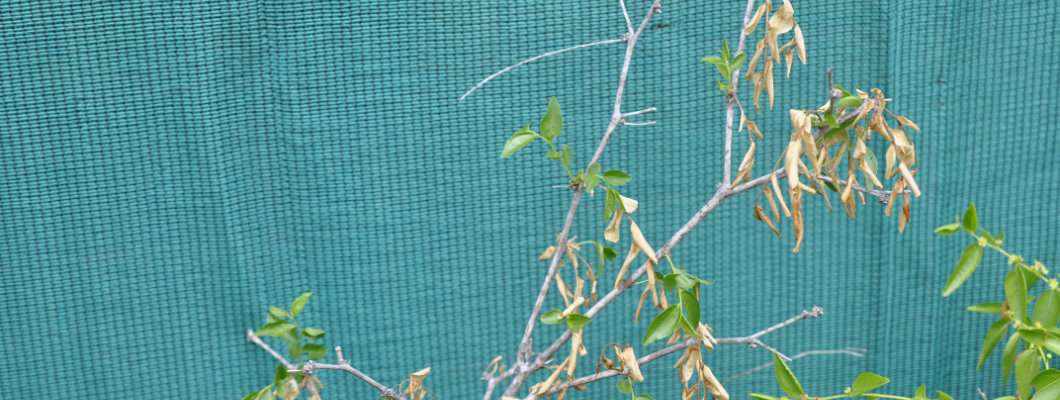
Title image above is copyright © Optimate Group Pty Ltd
(This article was originally published 10th January 2023 here on our Jujube Tree Nursery site.)
First published here 13th January 2023.
I noticed random jujube trees looking a bit ‘not right’ one day in November 2022. And then almost overnight they looked even more ‘not right’ — as in looked like they were outright dying! Pathetic drooping brown leaves covering entire (small) trees with barely, or any, green in sight. For example:
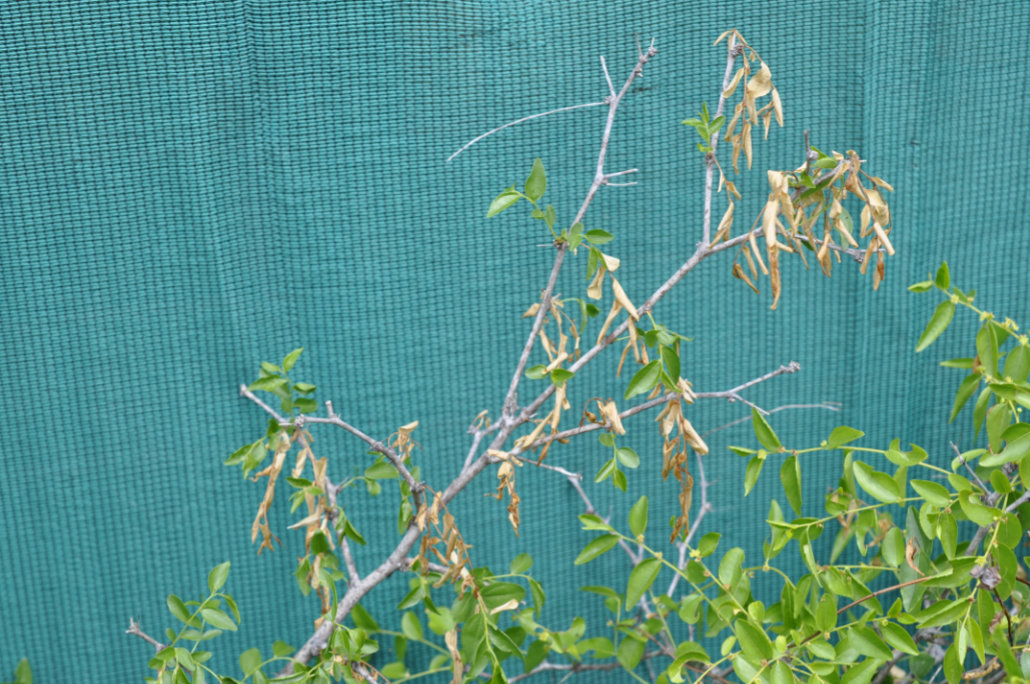
Sudden leaf loss on jujube rootstock
copyright © Optimate Group Pty Ltd
and
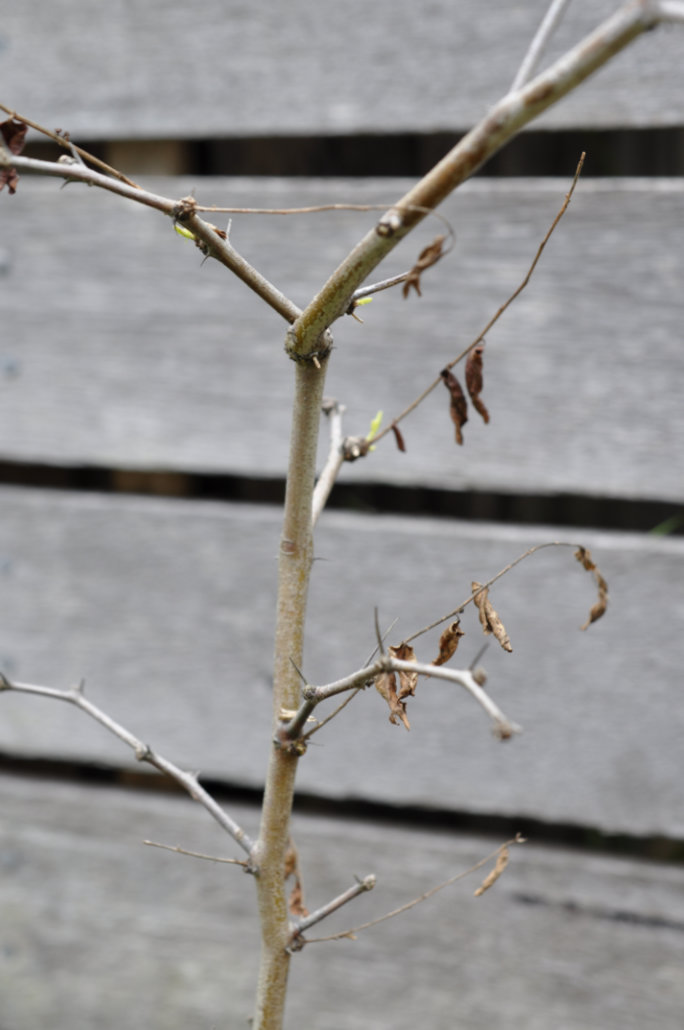
Sudden leaf loss on jujube tree
copyright © Optimate Group Pty Ltd
The only thing they had in common was that they were all in roughly 250-350 mm diameter pots. Other than that, they were in different locations, were of different ages, and of different cultivars. Some were pretty old rootstock not potted on in years, while others were one and two year old grafted cultivars all potted in the same medium back in 2021. Some were in regular black nursery pots and some were in 3 L Air-Pot containers. All were always surrounded by similar trees bursting with health and vitality.
I wondered about curl grubs (the larvae of Christmas beetles and the Black African beetle) causing root damage, but wasn’t convinced enough to uproot any trees to look — these larvae feast on grass roots predominantly, jujube trees have pretty thick, tough roots, and for this to be the cause would be a first since forever. I also didn’t want to risk literally killing any tree with a chance of saving by uprooting it during the peak growth season.
I did do a scrape test though — gently scraping away the uppermost bark on the very tips of each tree to see the colour underneath. All had perfectly healthy bright green sap, meaning the entire length of the trunk (and leaves) was being fed.
Water was fine, nutrients were fine, nothing made any sense, so I resigned myself to some losses and left them be. (I was still upset!)
And then I noticed some of my beautiful Japanese maples (Acer palmatum) were doing the exact same thing! I was really getting upset now! Again, these were in pots, all potted on at the same time and in the same medium in winter 2022, and again looking dead almost overnight, in the vicinity of other happy, healthy maples. What on Earth was going on?
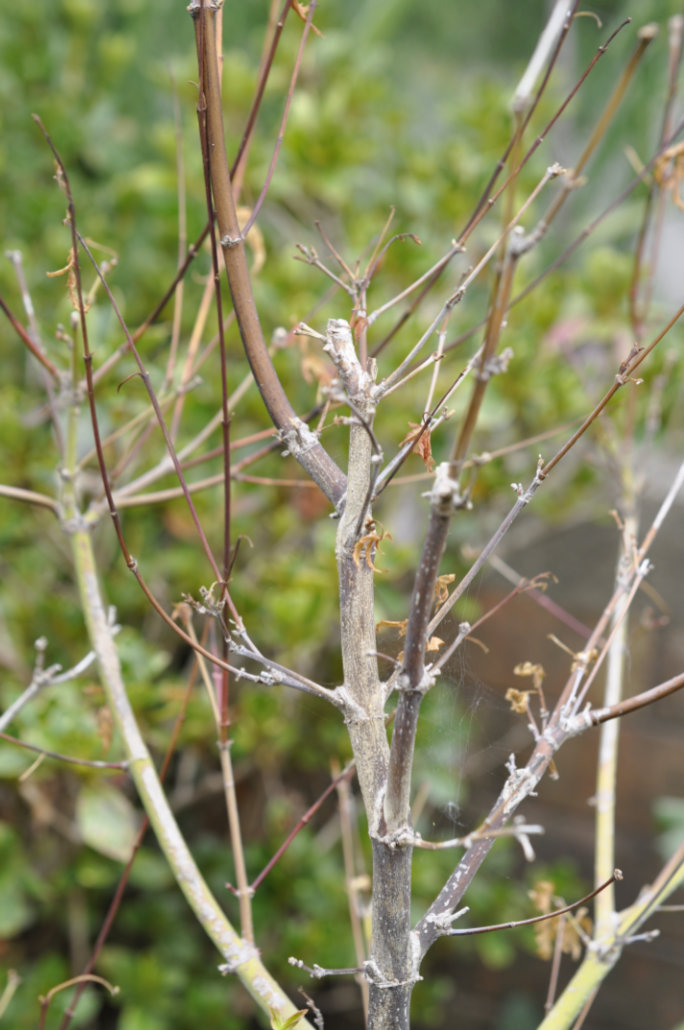
Sudden leaf loss on Japanese maple
copyright © Optimate Group Pty Ltd
Maybe a week later I noticed the tiniest little leaves growing back on the maples — the penny dropped and I checked the jujubes, and sure enough, they too had new growth coming back!
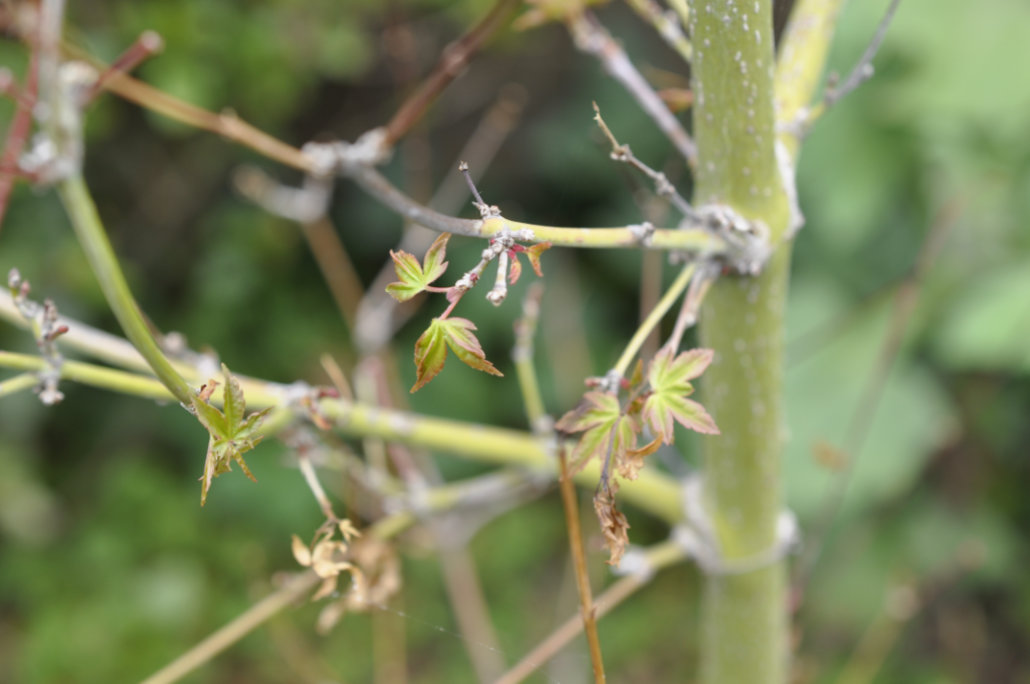
Regrowth on Japanese maple
copyright © Optimate Group Pty Ltd
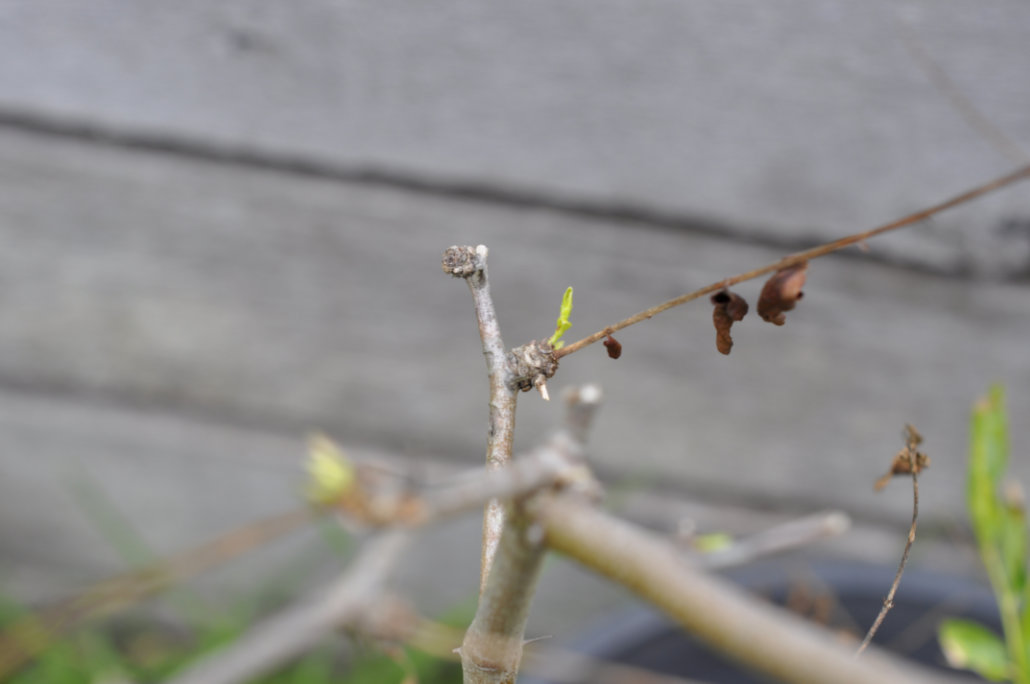
Regrowth on jujube tree
copyright © Optimate Group Pty Ltd
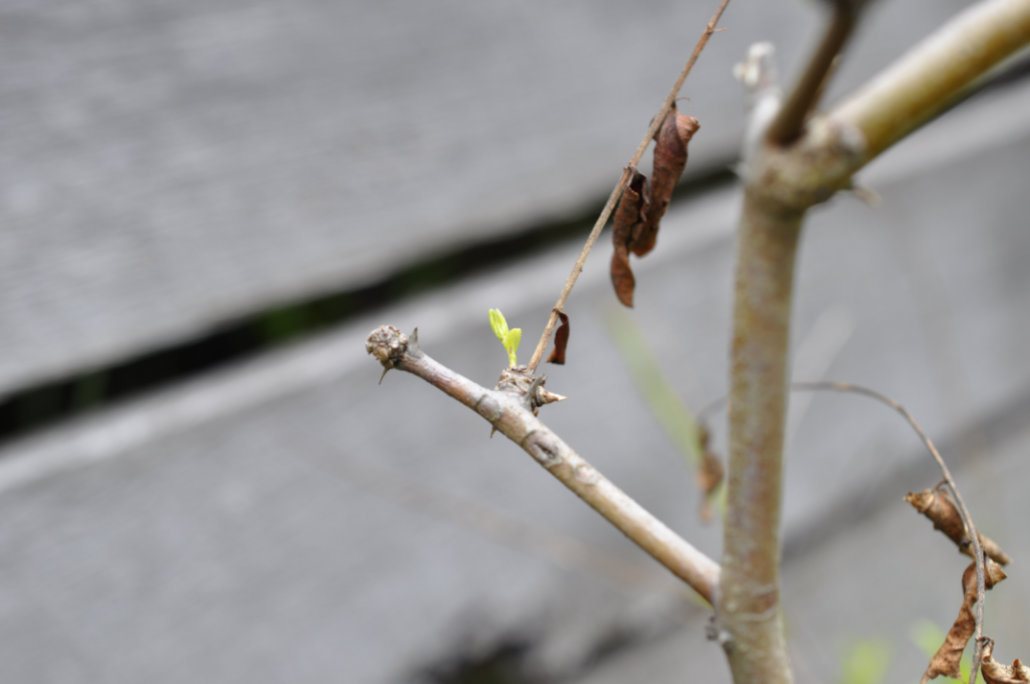
Regrowth on jujube tree
copyright © Optimate Group Pty Ltd
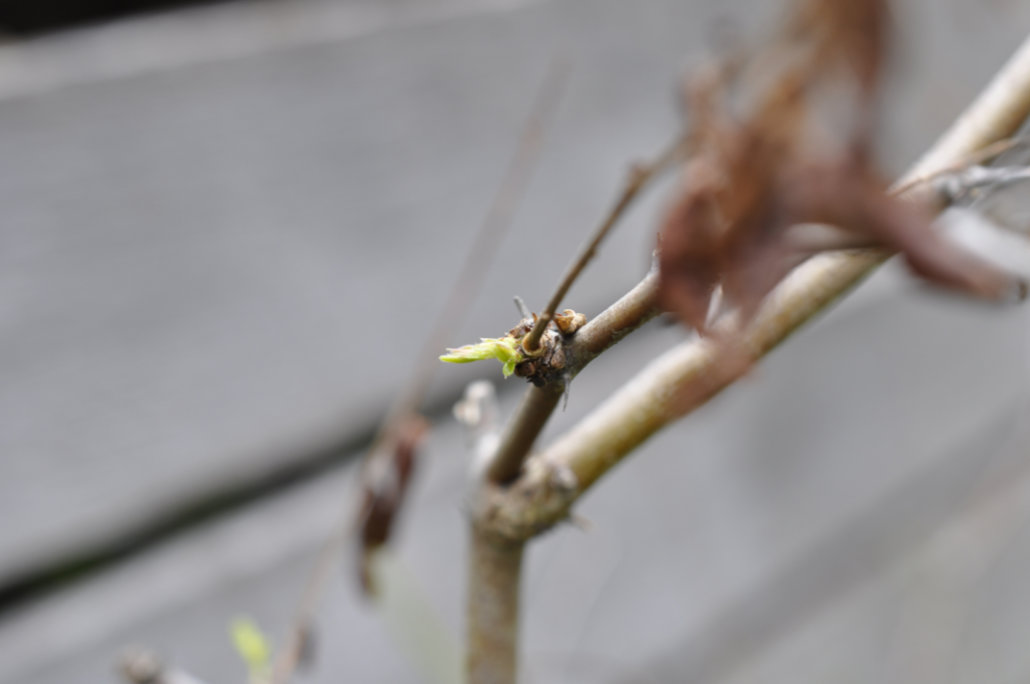
Regrowth on jujube tree
copyright © Optimate Group Pty Ltd
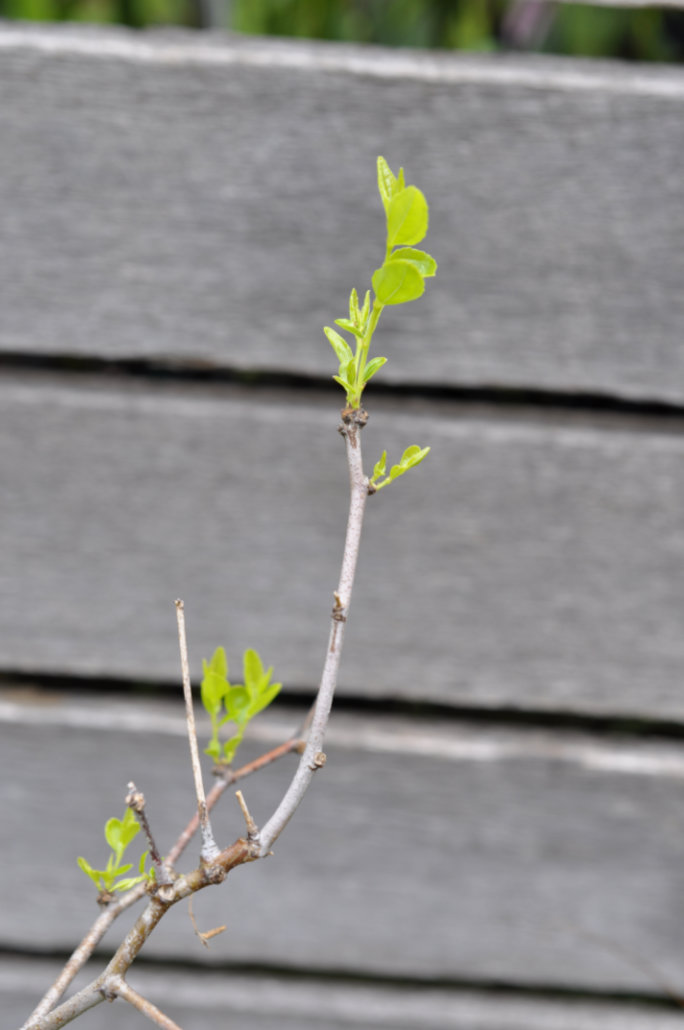
Regrowth on jujube tree
copyright © Optimate Group Pty Ltd
Both Japanese maples and jujubes are deciduous species, and I truly believe that the affected trees had been tricked by this very cool spring and summer we had been having, and had been preparing for dormancy. We didn’t have a genuine summer’s day until Christmas Eve, just high teens and low 20s right through spring on. No doubt our experience is much like Sydney’s to our north, which is officially experiencing a record number of consecutive days below 30 °C (thanks for the link Adrian!).
Anyone into gardens and plants would probably agree the whole of 2022 was a shocker for growing plants, whatever the type. Every one of us probably has a personal sob story! People into propagating especially noticed that things were ‘different’. Light- and/or temperature-dependent seeds not germinating at all. Other seeds germinating late, or germinating in a timely fashion but then not growing much at all. Cuttings with an abysmal strike-rate, dying quickly or just sitting there in suspended animation. More established plants not flowering, flowering poorly, or flowering out of season. On and on.
Nothing has felt normal recently. I’m hearing from seasoned tomato veterans in Sydney and Canberra — two different latitudes, longitudes, altitudes and climates — of healthy tomato plants growing well but with very delayed flower production.
One striking example is my personal experience with the beautiful Kaempferia rotunda, a plant with a most stunning flower and leaf. This species is new to me and a truly wonderful friend (Les) gave me several from his collection to appreciate. Like most in the Zingiberaceae (ginger) family, K. rotunda dies down over winter. But come mid-November the beautiful flowers appear, which only last two or three days. The magnificent leaves appear soon after that. You never, I was told, ever see the flower and leaf at the same time! (Even Wikipedia says this.)
But not this year! Not only were the flowers and leaves appearing together, but the flowers were lasting two weeks in some instances. Les said he has never seen this in twenty years of having them.
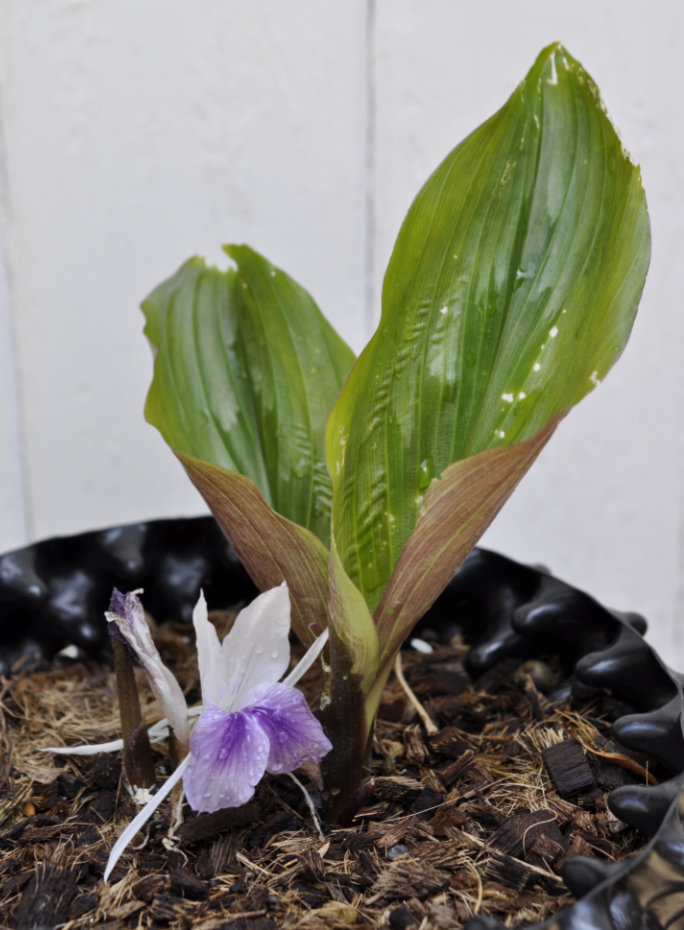
Kaempferia rotunda with both flower and leaf together
copyright © Optimate Group Pty Ltd
Let’s also just say that lawn-mowing is normally a weekly event here in summer, and I have barely seen or heard it in action!
Jujube trees are just one species which is especially sensitive to temperature and requires low nighttime temperatures to induce dormancy. Japanese maples just so happen to be another. Well, when we’ve been wearing winter pyjamas and needing a blanket on the bed into January, you can guess how much colder it was back in November…
Most people do not realise we are currently in a solar minimum, which began in December 2019. (And it is looking to be a grand solar minimum, as Professor Valentina Zharkova explains in her 2018 talk.) Solar cycles last on average eleven years, with sunspot activity and solar flares lowest during a solar minimum.
Back in 2015 Zharkova predicted above-average warmer summers with much colder winters in the northern hemisphere, while in the southern hemisphere summers would be cooler and winters would be warmer. Indeed, 2022 was truly odd, in that we never had much of a winter, and not much of a summer either. Which could explain the unheard of sight of baby Eastern water skinks (Eulamprus quoyii) — in July! And probably why they’re unusually large right now, with several months’ head start!
Another outcome of a solar minimum is increased cloud cover, due to lower solar activity and increased cosmic radiation. (I haven’t been taking notes, but bright blue cloudless sunny days these days do seem more noticeable by their absence.)
‘Cosmic radiation’ is made of high-energy particles such as hydrogen ions (protons) and other atomic nuclei (containing protons), and which originate mostly from outside the solar system. The sun’s magnetic field protects the solar system from bombardment by these particles, but more will ‘slip through’ and enter Earth’s atmosphere during a solar minimum, as there is less sunspot, solar flare, and solar wind activity to push them away.
The electric charge of these particles hitting our atmosphere causes clusters of molecules to form. These clusters become ‘seeds’, or nucleation sites, around which water molecules condense and form clouds. High cloud cover leads to lower temperatures and light intensity, and affects how light is scattered.
Some plants are sensitive to red and far-red light as a signal that the winter solstice is approaching. The longer wavelengths of red and far-red means these scatter less through clouds than blue and ultraviolet.
It may well be that an unseasonal combination of low temperatures and more exposure to red and far-red had tricked some plants into thinking winter is coming, and to prepare accordingly. Only for a period of normal warm weather and cloudless days to reverse that process and cause leaves to regrow!


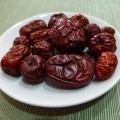
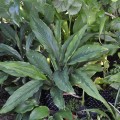
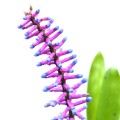
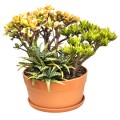


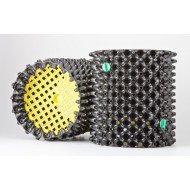

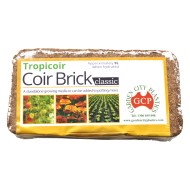
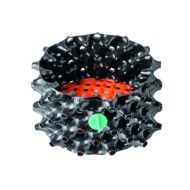
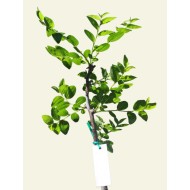
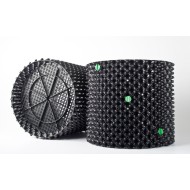
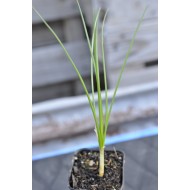
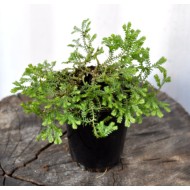
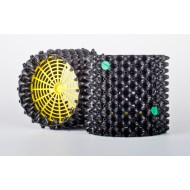
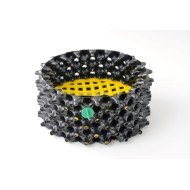
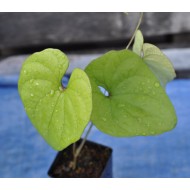
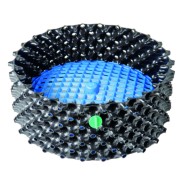
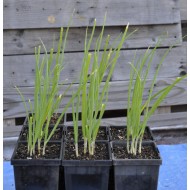
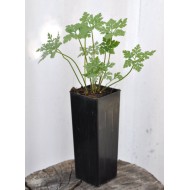
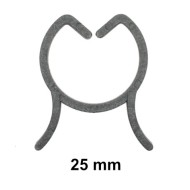
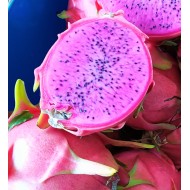

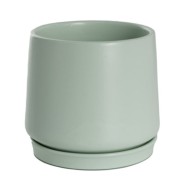
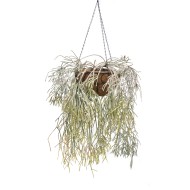
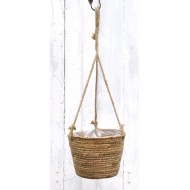
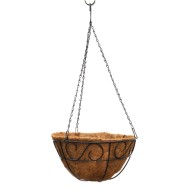
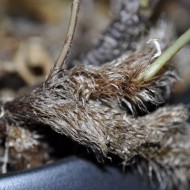
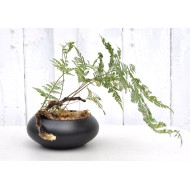
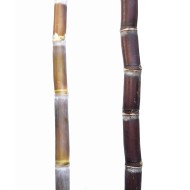
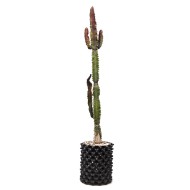
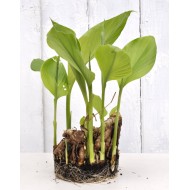
Leave a Comment